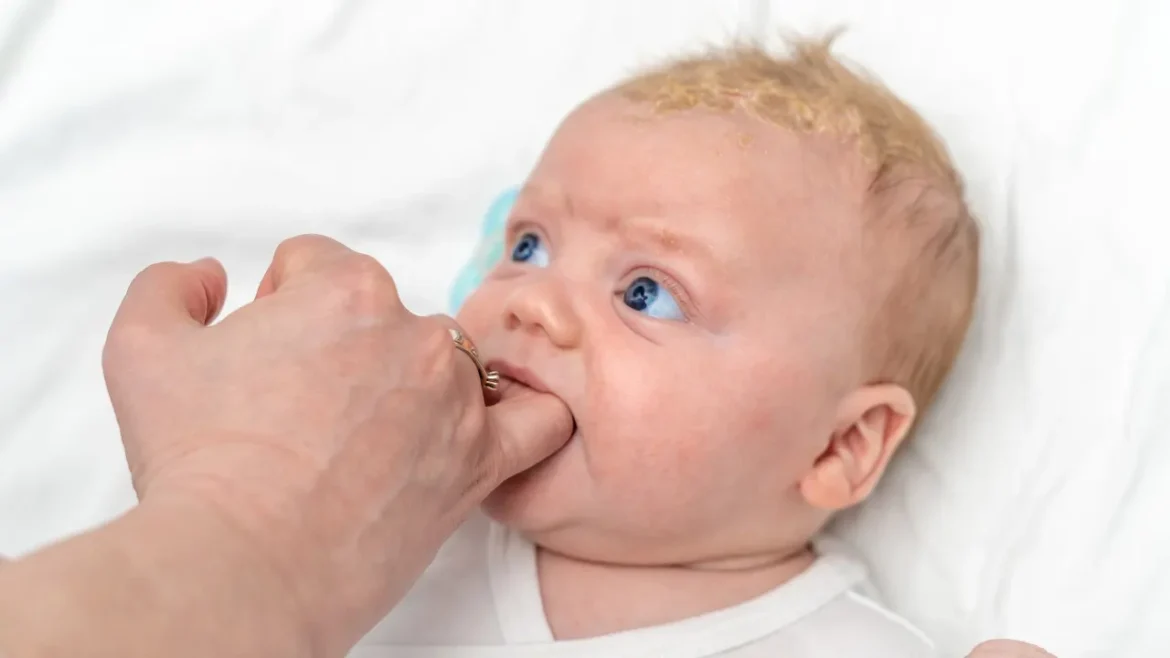Description
A baby’s scalp may develop scaly, greasy spots due to the condition known as cradle cap. Although it may occur in older kids and adults, it most frequently occurs in infants around the ages of two and twelve months. A cradle cap can occasionally extend to other parts of the body, including the neck, face, and diaper region, which can make the newborn itchy or uncomfortable.
You May Also Like:
FINDING THE BEST TURKEY TAIL MUSHROOM POWDER: 5 TOP BRANDS REVIEWED
THE CONNECTION BETWEEN MUSHROOMS AND COVID: 5 GREAT REASONS TO TRY FUNCTIONAL MUSHROOMS
Cradle Cap: Description, Causes, And Treatment Protocol is an original (HealthXWire) article.
Possible Causes
Although the specific etiology of cradle cap remains unknown, hyperactive skin oil glands are thought to be a contributing factor. The following are some other elements that may play a role in cradle cap formation: –
A fungal infection: Some infants might develop cradle cap because of the effect of Malassezia, a type of yeast.
Irritation: Cradle cap may form as a result of irritation from strong shampoos or even other hair products.
Hormonal changes: Cradle cap growth may be influenced by hormonal changes occurring place throughout pregnancy along with the initial few weeks after birth.
Genetics: Due to its tendency to be passed down in families, cradle cap might have a hereditary component.
Exacerbating and Mitigating Factors
Cradle cap symptoms can be made worse or better by numerous circumstances. Included among aggravating factors are the following: –
Abrasive soaps or shampoos: The indications of cradle cap may aggravate when parents use harsh soaps or shampoos upon a baby’s scalp.
Stress: Stress can increase the signs of cradle cap and weaken the body’s immune response.
Weather changes: Weather variations, like chilly dry air, may dry up the skin and make cradle cap symptoms worse.
In contrast, the following are cradle cap mitigating factors: –
Regular washing: The impact of the cradle cap may be decreased by routinely bathing the baby’s scalp using a mild, fragrance-free shampoo to get rid of extra oil.
Moisturizing: Baby’s scalp may benefit from a moderate, fragrance-free moisturizer application to help calm the skin and alleviate irritation.
Gentle brushing: The scales can be made loose and easier to remove just by gently stroking the baby’s scalp using a brush having soft bristles.

Standard Treatment Protocols
Regular cleaning, moisturizing, along with gentle brushing, are all part of the accepted cradle cap treatment regimen. A healthcare professional may occasionally recommend topical drugs.
There are a variety of treatment solutions: –
Gentle cleansing: Cleaning the afflicted region is the initial step in treating cradle cap. Warm water alongside a gentle baby shampoo might be used for washing the baby’s scalp. The scalp may then be lightly massaged utilizing a soft bristle brush or a soft, clean towel. The parents must make sure to rinse well and towel dry afterward.
Hydrating: The scalp must be moisturized after cleaning in order to keep it from getting dry. To hydrate the scalp, apply a light baby oil or simply petroleum jelly. The affected region must then be treated with a small portion and carefully massaged with it.
Topical medications: A pediatrician would advise applying a topical lotion or ointment when the cradle cap seems severe or fails to resolve with gentle cleaning and moisturizing. Based upon the underlying reason for the cradle cap, these might include hydrocortisone or antifungal substances. It is critical to strictly adhere to the directions given by the doctor in charge.
Eliminating potential irritants: Cradle cap may occasionally be brought on by an allergy to a particular product, like shampoo, soap, or detergent. Any probable irritants that might be aggravating the condition must be identified and removed.
Duration: Even without therapy, cradle cap typically goes away on its own in some weeks or months. Hence, the greatest treatment alternatives usually involve patience, regular cleaning, and moisturizing.


Treatment Options
There are numerous therapy alternatives available that may be useful in controlling cradle cap as an alternative to normal treatment methods. These involve over-the-counter medicines, prescription drugs, and natural cures.
Prescription Medications: The following are prescription drugs that may be useful in treating cradle cap: –
- Topical Corticosteroids
These can be found as creams, ointments, or lotions and function by easing itching and irritation. They ought only to be utilized for a brief period of time as they may cause discoloration of the skin or thinning among the side effects.
- Antibiotics
When patients suffer from an infection, their doctor may advise taking antibiotics to get rid of the infection.
- Antifungal Medications
A doctor may suggest an antifungal medicine if they believe that cradle cap is brought forth by an infection caused by fungi. Miconazole, ketoconazole, and ciclopirox are a few examples of such antifungal medicines.
- Calcineurin inhibitors
Certain medicines applied topically can help alleviate irritation and inflammation.
While using prescription medications, it is essential to stick to the directions given by the healthcare professional.
Over-the-Counter Formulations: The following are some over-the-counter medications that may be useful in treating cradle cap: –
- Mild shampoos
To get rid of extra oil and lessen the symptoms of cradle cap, use a mild, fragrance-free shampoo. Scales can also be removed with the aid of coal tar or salicylic acid-containing shampoos.
- Moisturizers
Baby’s scalp can benefit from a moderate, fragrance-free moisturizer application to help calm the skin.
- Petroleum jelly
Small amounts of petroleum jelly may be applied to a baby’s scalp to hydrate the skin.
Natural Remedies: Multiple nutritional supplements along with natural cures for cradle cap exist and can be used in conjunction with standard therapies. However, there is little scientific data to support their efficacy. Hence, a healthcare professional should be consulted before using any new supplements or treatments.
The following are some natural treatments for cradle cap: –
- Breast milk
The natural treatment for cradle cap is frequently suggested to be breast milk. The reason for this can be the inherent antibacterial qualities of breast milk, which can also help moisturize the afflicted region. Simply a little breast milk can be dabbed on the problem area, let it stay for some minutes, and then gently cleaned away.
- Coconut oil
Cradle cap can be treated naturally with coconut oil, which is a common ingredient in many products. It can aid in moisturizing the afflicted region and contains natural antibacterial and antifungal effects. A small amount of coconut oil might be warmed within the hands and rubbed on the afflicted region. After 15-20 minutes, gently remove using a fine-toothed comb.
- Tea Tree Oil
Tea tree oil has antifungal and antibacterial properties, which makes it a popular natural remedy for cradle cap. However, it is important to dilute the oil before applying it to the scalp, as it can be irritating to the skin in its concentrated form.
- Aloe vera
Aloe vera serves as a well-known natural cure for a variety of skin ailments because of its calming and healing qualities. A small quantity of natural aloe vera gel must be rubbed on the afflicted region and left on about 10 to 15 minutes prior to being rinsed off.
- Calendula
A plant known as calendula has been utilized for its medical benefits for many years. It may be used as a natural treatment for cradle cap because of its anti-inflammatory, antifungal, and antibacterial qualities. Calendula is available in a variety of products, such as creams, oils, and ointments.
- Vitamin D
Insufficient levels of vitamin D are linked to a higher risk of developing eczema alongside other skin problems. Vitamin D is essential for keeping healthy skin. According to some research, taking vitamin D supplements may help reduce the signs of cradle cap, eczema, along other skin disorders.
- Zinc
Zinc is a crucial mineral for maintaining a strong immune system and healthy skin. According to some research, taking zinc supplements may help reduce the symptoms and signs of cradle cap, eczema, along with other skin problems. However, additional studies are required to further confirm its efficacy.
- Probiotics
Live bacteria known as probiotics may help reduce the symptoms of cradle cap, eczema, along other skin problems.
Before utilizing natural remedies for a baby’s scalp, it is essential to consult a healthcare professional because some of them could have negative side effects or interfere with prescribed medications.


Conclusion
Cradle cap is a condition used to describe the presence of greasy, yellowish scales on the scalp of a baby. Cradle cap may be caused by a fungal infection, irritation, or hormonal changes and it may also be due to genetics. Scientific research has not proven the exact cause of the condition. While it can be concerning for parents, cradle cap is typically self-limiting and resolves on its own over time.
Some recommended treatments involve gentle washing of the baby’s scalp with a mild baby shampoo and the use of a soft brush to loosen scales. In more persistent cases, pediatricians may recommend specific baby shampoos or ointments. The good news is that the cradle cap does not usually cause discomfort for the baby and does not leave lasting negative effects on the baby.


Additional resources for further reference
https://kidshealth.org/en/parents/cradle-cap.html
https://www.aad.org/public/everyday-care/hair-scalp-care/scalp/treat-cradle-cap
https://www.nhs.uk/conditions/cradle-cap/
https://my.clevelandclinic.org/health/diseases/15786-cradle-cap-seborrheic-dermatitis-in-infants
Important Note: The information contained in this article is for general informational purposes only, and should not be construed as health or medical advice, nor is it intended to diagnose, prevent, treat, or cure any disease or health condition. Before embarking on any diet, fitness regimen, or program of nutritional supplementation, it is advisable to consult your healthcare professional in order to determine its safety and probable efficacy in terms of your individual state of health.
Regarding Nutritional Supplements Or Other Non-Prescription Health Products: If any nutritional supplements or other non-prescription health products are mentioned in the foregoing article, any claims or statements made about them have not been evaluated by the U.S. Food and Drug Administration, and such nutritional supplements or other health products are not intended to diagnose, treat, cure, or prevent any disease.
Table of Contents


